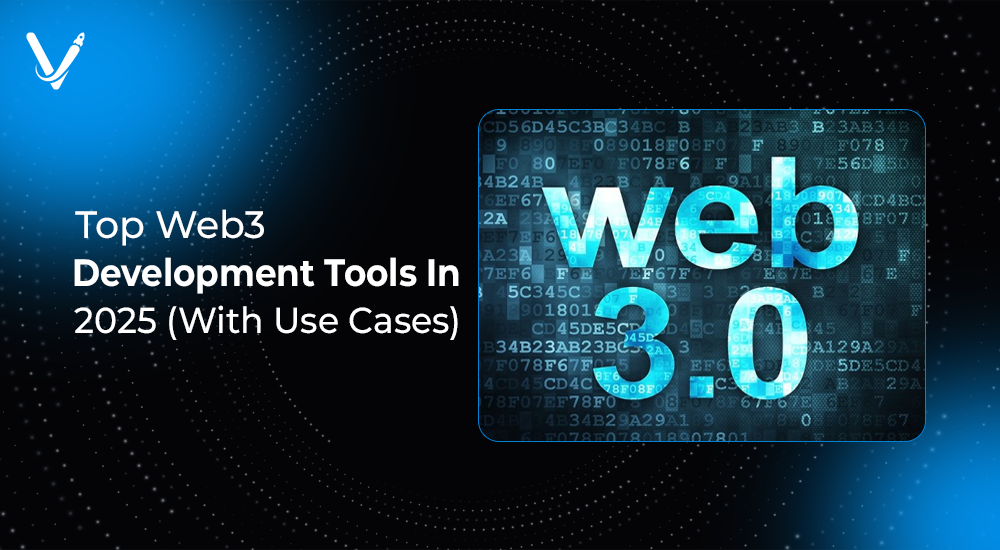DevOps KPIs That Matter in 2025
 Vimal Tarsariya
Vimal TarsariyaJun 14, 2025

Success in DevOps is no longer defined by just faster delivery—it’s measured by value, stability, security, and scalability. In 2025, organizations embracing DevOps are shifting their focus toward outcomes that align engineering efficiency with business performance. Measuring the right DevOps KPIs (Key Performance Indicators) is essential to optimizing workflows, identifying bottlenecks, and delivering value at scale.
This article explores the most important DevOps KPIs in 2025, why they matter, how to measure them, and how organizations are using them to drive results. Whether you're an engineering manager, CTO, DevOps architect, or site reliability engineer (SRE), these KPIs will help you gauge performance across delivery pipelines, infrastructure, team collaboration, and system health.
Why Tracking DevOps KPIs Is Non-Negotiable in 2025
DevOps has matured into a strategic enabler of business success. In 2025, simply deploying faster isn't enough—engineering teams are expected to prove impact. The only way to do that? Measure what matters. This section explains why DevOps KPIs are a foundational part of modern software delivery and how they drive visibility, accountability, and performance.
Key benefits of tracking DevOps KPIs:
- Identify friction points in CI/CD pipelines
- Accelerate software delivery without sacrificing quality
- Enhance collaboration between development and operations
- Improve customer satisfaction and reduce churn
- Justify engineering investment to business leaders
Core Categories of DevOps KPIs in 2025
Not all DevOps KPIs are created equal. To truly understand and optimize your DevOps processes, it's important to organize metrics into meaningful categories. This section introduces the major domains where KPIs make an impact—from delivery and reliability to infrastructure, operations, and team productivity.
The four main KPI categories are:
- Deployment Metrics
- Quality Assurance Metrics
- Infrastructure & Reliability Metrics
- Operational & Team Efficiency Metrics
Deployment Metrics
Fast, reliable deployments are at the heart of successful DevOps. Deployment metrics help you evaluate the effectiveness of your CI/CD pipelines and how quickly features or fixes reach your end users. This section explores the most critical indicators of delivery health and agility.
Deployment Frequency
This KPI tracks how often code is deployed to production. A higher deployment frequency typically indicates a mature, automated CI/CD pipeline.
Why it matters:
Faster and more frequent deployments result in quicker user feedback and increased competitive advantage.
Example:
Spotify deploys thousands of times per day thanks to their microservices architecture and release automation systems.
Change Lead Time
Lead time measures how long it takes for code changes to go from commit to production. This is one of the most telling signs of engineering efficiency.
Why it matters:
Shorter lead times reduce time-to-market and increase business responsiveness.
Best practice:
Track lead time using Git commit timestamps, build times, and production deployment logs.
Change Failure Rate
The change failure rate refers to the percentage of changes that cause failures in production.
Why it matters:
A high failure rate suggests unstable releases or inadequate testing. Reducing this rate improves system reliability and user trust.
Mean Time to Recovery (MTTR)
This KPI shows how fast teams recover from incidents, errors, or production failures.
Why it matters:
Lower MTTR means less downtime, better resilience, and more satisfied users.
Quality Assurance Metrics
High-speed delivery is useless without quality. As development velocity increases, quality assurance metrics ensure your code remains robust, secure, and stable. This section highlights the KPIs that help prevent regressions, minimize bugs, and maintain confidence in your software releases.
Test Coverage
Test coverage measures the percentage of your codebase that is covered by automated tests.
Why it matters:
More coverage generally means fewer bugs slip into production.
Recommended tools:
Jest, PyTest, Mocha, JUnit, and SonarQube.
Defect Escape Rate
This KPI measures how many bugs are reported post-release versus those caught earlier.
Why it matters:
High defect escape rates indicate weak pre-release testing or staging environments that don’t mirror production.
Code Churn
Code churn is the rate at which code is rewritten, modified, or discarded shortly after it's written.
Why it matters:
Excessive churn may point to poor planning, unclear specs, or lack of developer confidence.
Infrastructure and Reliability Metrics
Scalability, uptime, and fault tolerance are essential in cloud-native architectures. Infrastructure and reliability KPIs provide insights into the strength and resilience of your tech stack. This section discusses how to track and optimize system health in real-time.
Infrastructure as Code (IaC) Adoption
In 2025, organizations use IaC tools to manage cloud infrastructure through versioned code.
Why it matters:
IaC improves automation, auditability, rollback capabilities, and disaster recovery.
Popular tools:
Terraform, AWS CloudFormation, Pulumi, Azure Resource Manager.
System Uptime / Availability
Availability refers to the percentage of time a service is operational.
Why it matters:
Services with 99.999% uptime are expected in mission-critical systems.
How to measure:
Use monitoring tools like New Relic, Pingdom, or Datadog.
Error Rates and Latency
Tracking API errors (e.g., 500s) and response times ensures that services remain performant.
Pro tip:
Set SLOs (Service Level Objectives) for acceptable error rates and latency thresholds.
Operational Efficiency Metrics
Efficient operations help teams do more with less. In a world where cloud costs and operational complexity are rising, these KPIs focus on the cost, stability, and sustainability of engineering systems. Learn how to measure the financial and functional health of your DevOps efforts.
Mean Time Between Failures (MTBF)
MTBF tracks the average time between two system failures.
Why it matters:
It highlights how often your systems fail and helps quantify reliability over time.
Cost Per Deployment
This KPI measures the average financial cost associated with each deployment.
Why it matters:
In 2025, cloud optimization is a priority. Understanding cost per deployment helps reduce waste and improve resource allocation.
Suggested tools:
AWS Cost Explorer, Azure Cost Management, GCP Billing APIs.
Team Productivity and Culture Metrics
DevOps is ultimately about people and collaboration. Metrics around team velocity, satisfaction, and burnout are vital to ensure a healthy development culture. This section dives into how these human-centric KPIs influence software outcomes and long-term team performance.
Lead Time by Team
Tracking deployment or commit-to-prod lead time by team reveals which teams need support, process improvements, or better tooling.
Developer Satisfaction & Burnout Metrics
Happy developers ship better code. Track satisfaction through quarterly surveys, anonymous feedback, and burnout risk indicators.
Why it matters:
Burnout leads to high attrition, costly delays, and a toxic culture.
Change Volume Per Developer
While not a sole performance metric, monitoring commit volume alongside code quality and failure rate offers context on developer velocity.
How to Implement a DevOps KPI Strategy
Understanding KPIs is one thing—putting them into action is another. This section walks you through a practical framework for integrating KPIs into your DevOps workflows. It covers goal-setting, automation, visualization, and regular review cycles that ensure your metrics drive results, not just reports.
Steps to follow:
- Identify business goals and align KPIs accordingly
- Automate metric collection using CI/CD and monitoring tools
- Set realistic benchmarks based on past data and DORA metrics
- Visualize data in dashboards with Grafana or Looker
- Review KPIs monthly and course-correct as needed
Real-World DevOps KPI Success Stories
Nothing validates a strategy like real results. In this section, you'll find case studies and examples of how leading organizations use DevOps KPIs to transform their software delivery and business performance. These stories highlight the practical power of tracking the right metrics.
Capital One reduced change failure rates by 40% after implementing full-stack observability and testing automation.
Shopify achieved sub-10-minute MTTR across services using SRE practices and AI-assisted alerting.
Adobe improved developer satisfaction scores by 25% by visualizing team-based deployment metrics and reducing friction.
Future Trends in DevOps KPI Measurement
As technology evolves, so do the ways we measure success. This section peeks into the future of KPI tracking—where AI, observability, and business alignment redefine how engineering teams prove their value. Get ready for the next wave of intelligent DevOps analytics.
Trends to watch:
- AI-assisted observability to detect anomalies before they occur
- KPI-as-Code embedded in pipelines for enforcement and review
- Customer-centric KPIs that link uptime and delivery to actual revenue impact
- DevOps value stream metrics visualizing bottlenecks across the software supply chain
Conclusion: Focus on KPIs That Drive Impact
After exploring dozens of KPIs and implementation strategies, it's clear that effective DevOps is a data-driven discipline. The best teams in 2025 don’t guess—they measure, refine, and optimize continuously.
By aligning DevOps KPIs with business objectives, engineering teams can deliver not just features—but measurable value.
Ready to evolve your DevOps approach with meaningful KPIs and automation? Connect with Vasundhara Infotech to build data-driven DevOps solutions tailored to your engineering challenges and business goals.








































